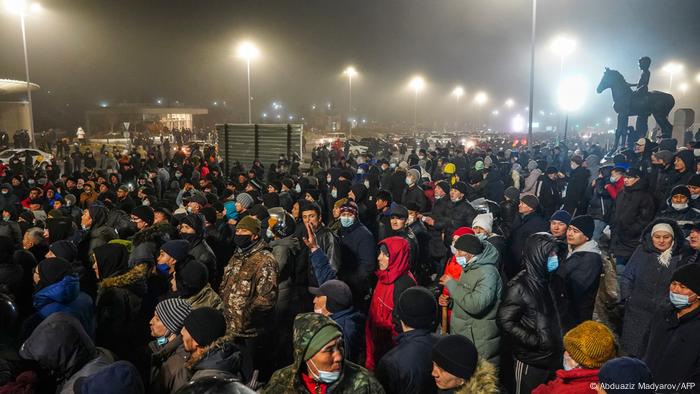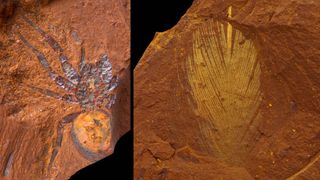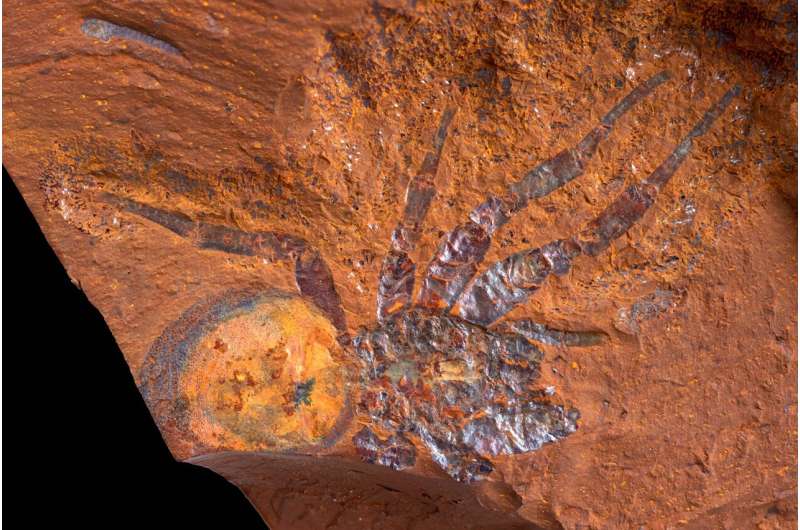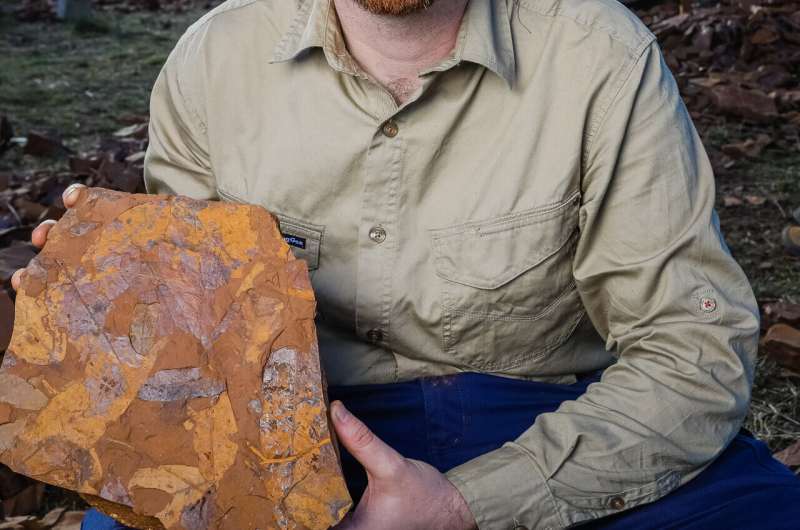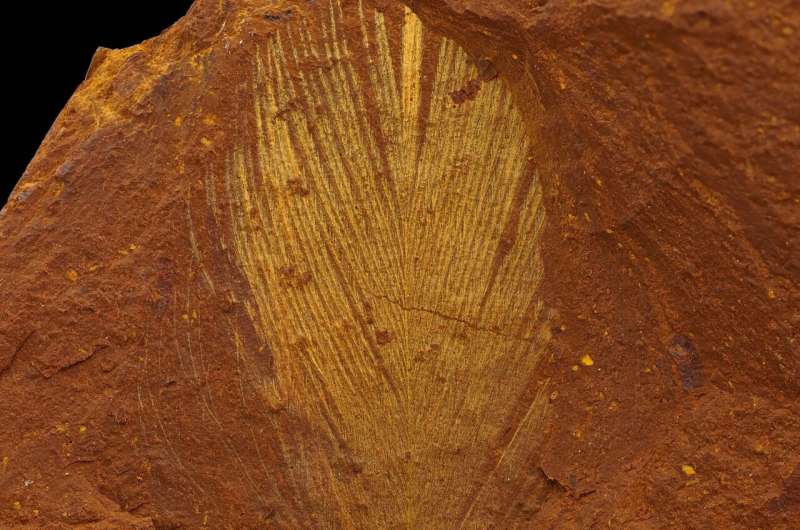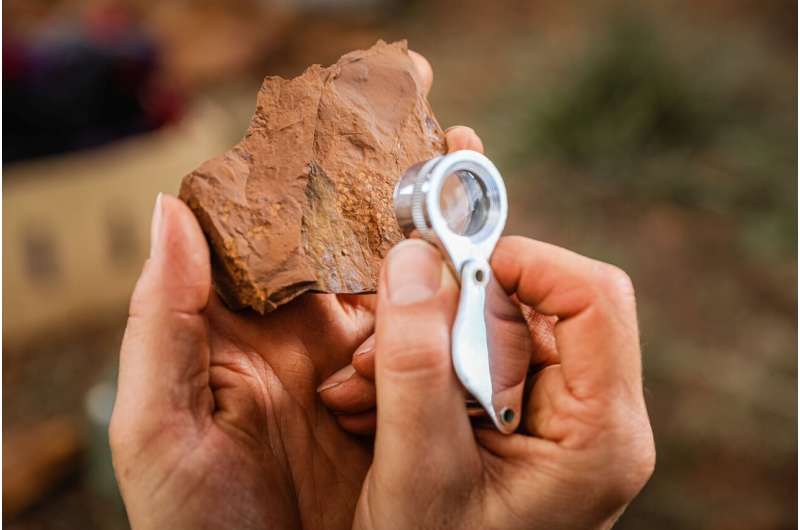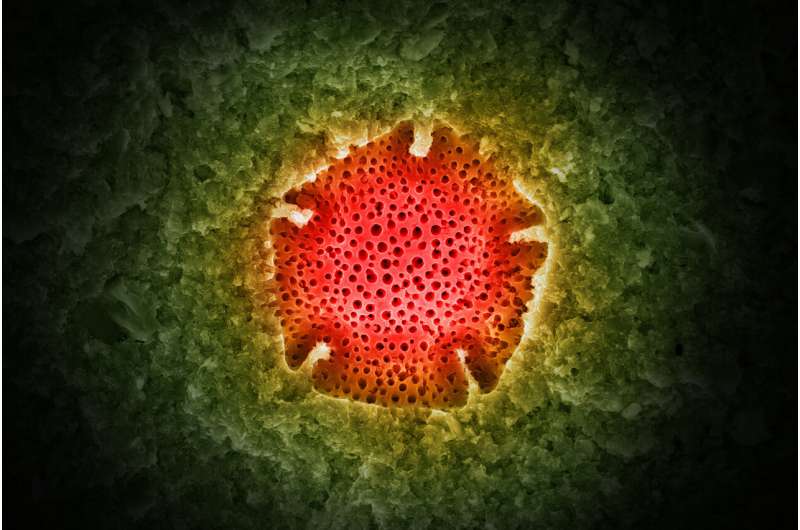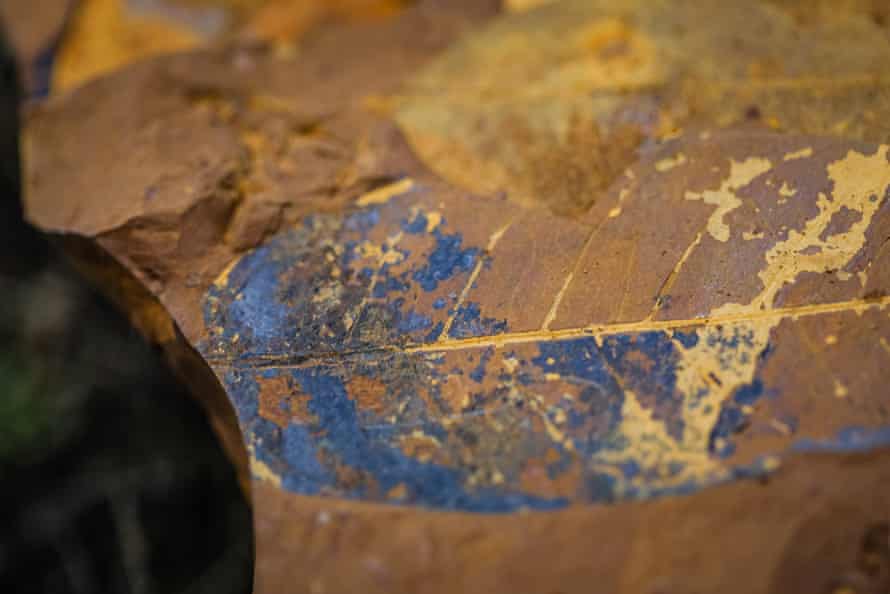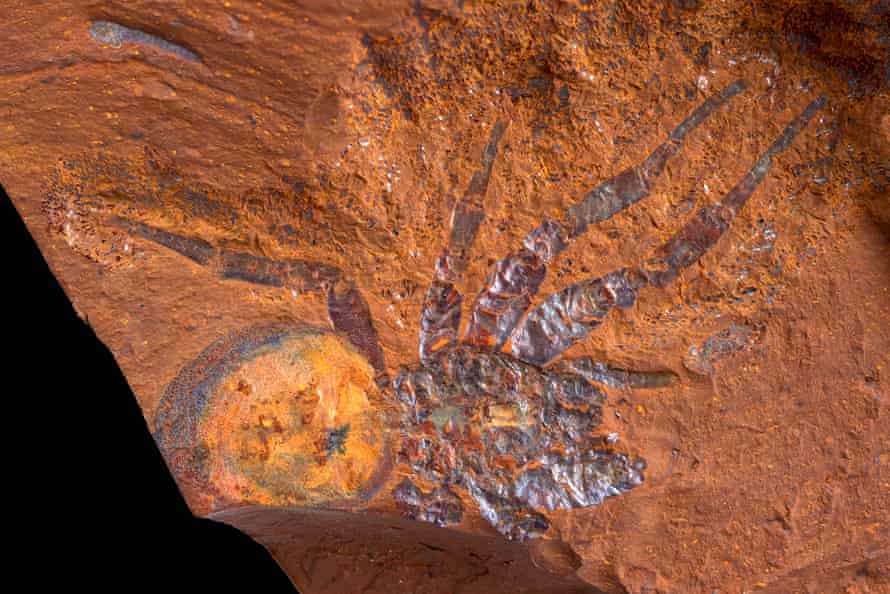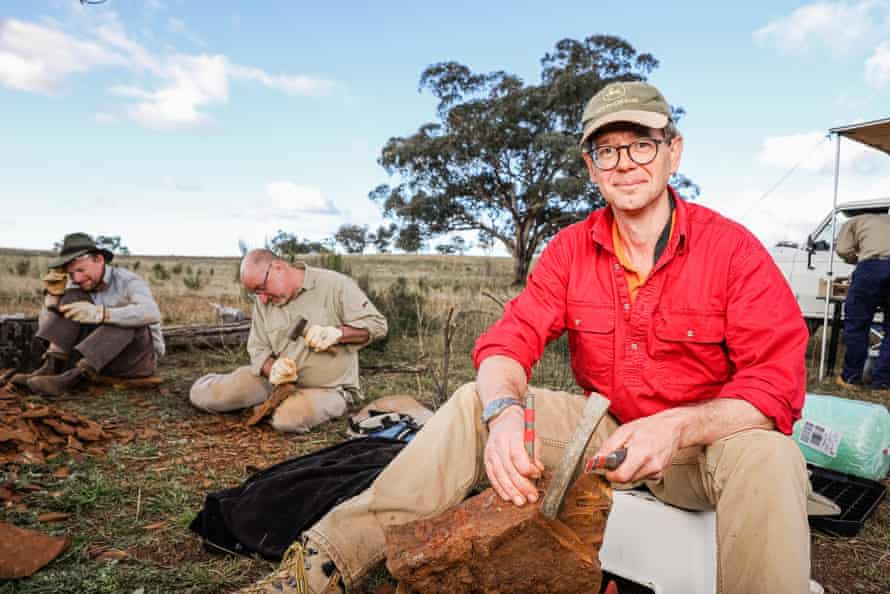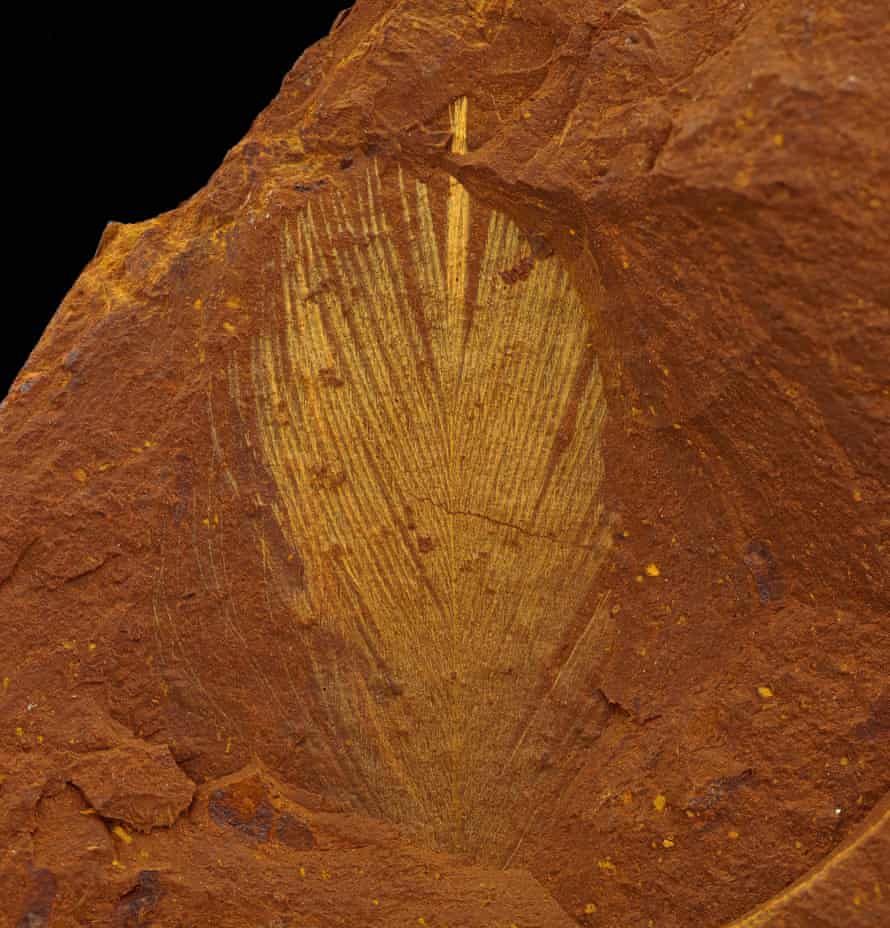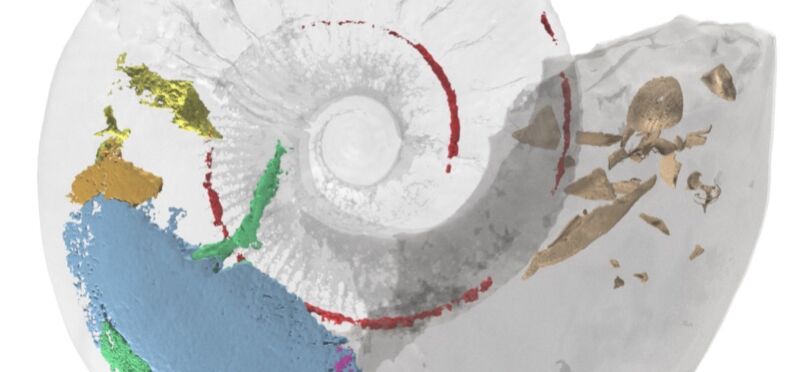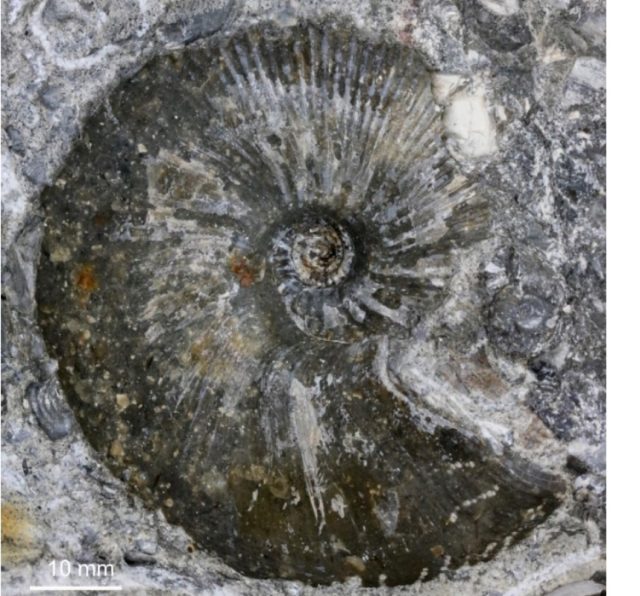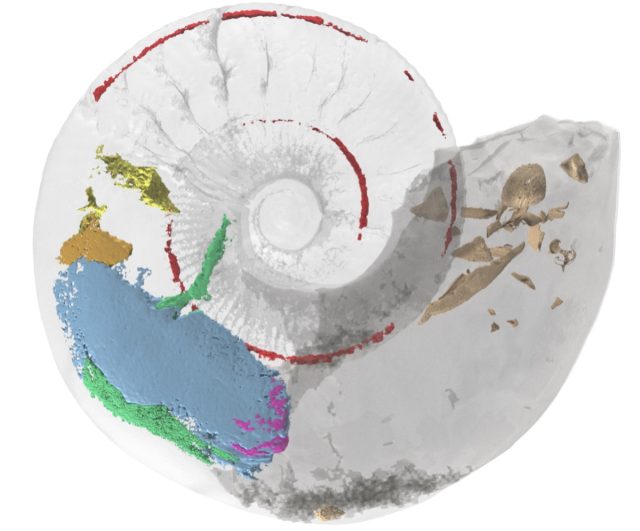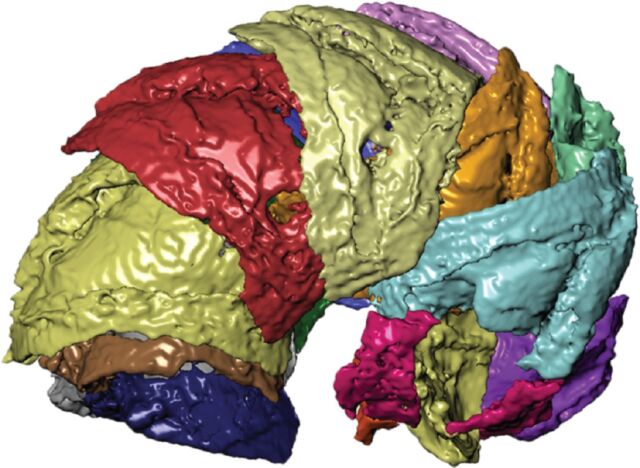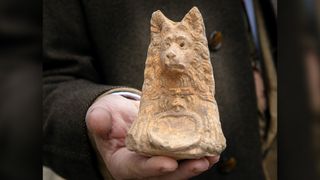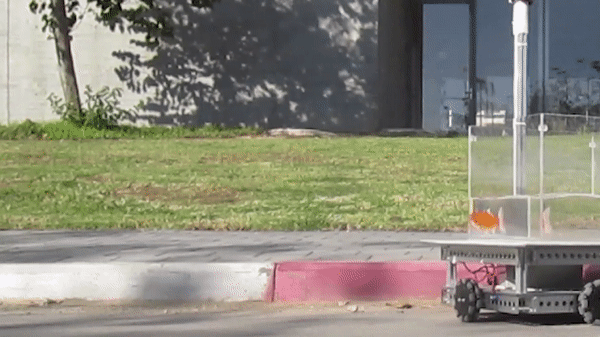Kazakhstan President Kassym-Jomart Tokayev has ordered security forces to "kill without warning" to crush the violent protests that have paralyzed the former Soviet republic and reportedly left dozens dead.

Riot police officers stand by during a protest in Almaty, Kazakhstan, Wednesday, Jan. 5, 2022. Demonstrators denouncing the doubling of prices for liquefied gas have clashed with police in Kazakhstan's largest city and held protests in about a dozen other cities in the country. (AP Photo/Vladimir Tretyakov)
By Radina Gigova, Anna Chernova and Katharina Krebs, CNN 19 mins ago
Tokayev said the situation had "stabilized" in Kazakhstan's largest city, Almaty, and that the "introduction of a state of emergency is yielding results."
"But terrorists continue to damage state and private property and use weapons against citizens," he said. "I gave the order to law enforcement agencies and the army to open fire to kill without warning."
The speech attempted to undermine the narrative that the demonstrations were a product of popular unrest that turned increasingly destructive and deadly. Tokayev said the violence was the product of a well-organized enemy, armed with sleeper cells carrying out "terrorist attacks" and "specialists trained in ideological sabotage, skillfully using disinformation or 'fakes' and capable of manipulating people's moods."
"Their actions showed the presence of a clear plan of attacks on military, administrative and social facilities in almost all areas, coherent coordination of actions, high combat readiness and bestial cruelty," Tokayev said. "They need to be destroyed."
However, several protesters who spoke to international media rejected that characterization.
"We are neither thugs nor terrorists," one woman said. "The only thing flourishing here is corruption"
Another man told Reuters that people "want the truth."
"The government is rich, but all of these people here have loans to pay. We have our pain, and we want to share it," he said.
The demonstrations are the biggest challenge yet to the autocrat's rule, with initial public anger over a rise in fuel prices expanding to wider discontent with the government over corruption, living standards, poverty and unemployment in the oil-rich nation -- all of which has been exacerbated by the Covid-19 pandemic, experts say.
"This is a government that is highly detached from the reality of what happens on the ground. It's a country where there are no institutions through which to protest; the only route is on the streets," Paul Stronski of the Carnegie Endowment for International Peace told CNN.
Protesters in Almaty reportedly stormed the airport, forcibly entered government buildings, and set fire to the city's main administration office, local media reported. Dozens were reported killed and hundreds more injured in clashes there Thursday. There were also reports of a nationwide internet blackout and damage in other major cities, though Tokayev said internet was gradually being restored as the situation stabilizes. Authorities had previously declared a nationwide state of emergency with a curfew and movement restrictions until January 19, according to local media.
In his address, Tokayev highlighted that peaceful assembly was legalized in 2020 to promote democracy. However he said calls from abroad to find a peaceful solution were "nonsense."
"What kind of negotiations can there be with criminals, murderers?" Tokayev added.
Tokayev said a contingent of the Collective Security Treaty Organization (CSTO), a Russian-led military alliance made up of former Soviet states, has arrived in the country "for a short period of time" to carry out the functions of defense and support. The organization's secretary-general, Stanislav Zas, told Russia's state-run English language Sputnik news agency that about 3,600 CSTO personnel would be deployed to Kazakhstan to protect government and strategic facilities and help maintain public order. Russian state news agency TASS reported that a brigade of airborne forces had arrived in Kazakhstan.
Tokayev thanked the heads of CSTO countries for their support and expressed "special gratitude" to Russian President Vladimir Putin for "very promptly and, most importantly, in a friendly manner reacted warmly to my appeal" for a CSTO contingent.
The Kazakh leader also thanked Chinese President Xi Jinping, the presidents of the other CSTO member countries, the presidents of Uzbekistan, Turkey and "the leaders of the UN and other international organizations for their words of support."
Kazakhstan, the world's ninth-largest nation by landmass and Central Asia's the largest economy in Central Asia, has often boasted of its stability in a region that has seen its share of conflict.
Even before its independence in 1991, the country's political scene was dominated by one man -- Nursultan Nazarbayev. The longtime president and former Communist Party official ruled for almost three decades before stepping down in 2019. His autocratic method of governance sparked international concern and saw authorities harshly crack down on protests, jail critics and stifle press freedoms, according to global rights groups. Critics accused Nazarbayev of appointing family members and allies to key jobs in government and his family is believed to control much of the Kazakh economy, Reuters reported.
Nazarbayev was best known in the West for renouncing nuclear weaponry and his relocation of the capital to the futuristic city of Astana -- which was later renamed Nur-Sultan, after himself.
Amnesty International said the protests are "a direct consequence of the authorities' widespread repression of basic human rights."
"For years, the government has relentlessly persecuted peaceful dissent, leaving the Kazakhstani people in a state of agitation and despair," said Marie Struthers, Amnesty's director for Eastern Europe and Central Asia in a statement.
By DASHA LITVINOVA

1 of 5
MOSCOW (AP) — The President of Kazakhstan said Friday he authorized law enforcement to open fire on “terrorists” and shoot to kill, a move that comes after days of extremely violent protests in the former Soviet nation.
In a televised address to the nation, Kassym-Jomart Tokayev blamed the unrest on “terrorists” and “militants” and said that he had authorized the use of lethal force against them.
“Those who don’t surrender will be eliminated,” Tokayev said.
He also blasted calls for talks with the protesters made by some other countries as “nonsense.” “What negotiations can be held with criminals, murderers?” Tokayev said.
Kazakhstan’s Interior Ministry reported Friday that 26 protesters had been killed during the unrest, 18 were wounded and more than 3,000 people have been detained. A total of 18 law enforcement officers were reported killed as well, and over 700 sustained injuries.
Kazakhstan is experiencing the worst street protests since the country gained independence three decades ago. The demonstrations began over a near-doubling of prices for a type of vehicle fuel and quickly spread across the country, reflecting wider discontent over the rule of the same party since independence.
Protests have turned extremely violent, with government buildings set ablaze and scores of protesters and more than a dozen law enforcement officers killed. Internet across the country has been shut down, and two airports closed, including one in Almaty, the country’s largest city.
In a concession, the government on Thursday announced a 180-day price cap on vehicle fuel and a moratorium on utility rate increases. Tokayev has vacillated between trying to mollify the protesters, including accepting the resignation of his government, and promising harsh measures to quell the unrest, which he blamed on “terrorist bands.”
In what was seen as one such measure, the president has called on a Russia-led military alliance for help.
The alliance, the Collective Security Treaty Organization, includes the former Soviet republics of Kazakhstan, Belarus, Armenia, Tajikistan and Kyrgyzstan and has started deploying troops to Kazakhstan for a peacekeeping mission.
Kazakh officials have insisted that the troops will not be fighting the demonstrators, and instead will take on guarding government institutions.
On Friday, Tokayev declared that constitutional order was “mainly restored in all regions of the country” and that “local authorities are in control of the situation.”
The president added, however, that “terrorists are still using weapons and are damaging people’s property” and that “counterterrorist actions” should be continued.
Skirmishes in Almaty were still reported on Friday morning. Russia’s state news agency Tass reported that the building occupied by the Kazakh branch of the Mir broadcaster, funded by several former Soviet states, was on fire.
However, the Almaty airport — stormed and seized earlier by the protesters — was back under the control of Kazakh law enforcement and CSTO peacekeepers, Russian Defense Ministry spokesman Maj. Gen. Igor Konashenkov said Friday. The airport will remain shut until Friday evening, local TV station Khabar 24 reported, citing the airport’s spokespeople.
In other parts of the country some things started to go back to normal. In the capital, Nur-Sultan, access to the internet has been partially restored, and train traffic has been resumed across Kazakhstan.
The airport in the capital is operating as usual, Khabar 24 reported. According to the TV channel, airlines will resume domestic flights to the cities of Shymkent, Turkestan and Atyrau, as well as flights to Moscow and Dubai, starting from 3 p.m. (0900 GMT).
___
Jim Heintz in Moscow contributed.
Updated / Friday, 7 Jan 2022

Kazakh President Kassym-Jomart Tokayev has said constitutional order had mostly been restored in the central Asian country hit by unrest this week.
The Kazakh interior ministry said in a separate statement that 26 "armed criminals" had been "liquidated" and more than 3,000 of them detained, while 18 police and national guard servicemen had been killed since the start of the protests.
"An anti-terrorist operation has been launched. The forces of law and order are working hard. Constitutional order has largely been restored in all regions of the country," Mr Tokayev was quoted as saying in a statement.
"Local authorities are in control of the situation. But terrorists are still using weapons and damaging the property of citizens. Therefore, counter-terrorist actions should be continued until the militants are completely eliminated," he added.
Yesterday Russia sent in paratroopers to help put down the countrywide uprising in one of Moscow's closest former Soviet allies as part of the Russia-led CSTO security bloc.
The overall peacekeeping force of the CSTO will number about 2,500 and will stay in Kazakhstan for a few days or weeks, the RIA news agency quoted the general secretary of the alliance as saying yesterday.
This morning, Reuters correspondents saw armoured personal carriers and military servicemen in the main square of Almaty, Kazakhstan's largest city, where soldiers fired at protesters a day before.
A few hundred metres away, Reuters correspondents saw a dead body in a heavily damaged civilian car.
In another part of the city they saw a ransacked store which used to sell ammunition and military vehicles and about 100 people in military uniforms at another square in Almaty.
Mr Tokayev will address the nation later today, his administration said, asking people in Almaty to limit their travelling around the city while the "search for the remaining hiding bandits is under way."
The violence has been unprecedented in a state ruled firmly since Soviet times by leader Nursultan Nazarbayev, who has held on to the reins despite stepping down three years ago as president.
The uprising, which began as protests against a New Year's Day fuel price hike, swelled on Wednesday when protesters chanting slogans against Mr Nazarbayev stormed and torched public buildings in Almaty and other cities.
Protesters accused Mr Nazarbayev's family and allies of amassing vast wealth while the nation of 19 million remained poor.
Earlier this week Mr Tokayev, Mr Nazarbayev's hand-picked successor, claimed the unrest was due to foreign-trained terrorists.
Shock in Kazakhstan after sleepy nation erupts into violence
AFP , Thursday 6 Jan 2022
Burnt-out cars littering the streets, government buildings in ruins, bullet casings on the ground -- residents of Kazakhstan's largest city were in shock Thursday after their sleepy nation suddenly erupted into violence.

Related
Protesters had stormed and set alight government buildings including the mayor's office and a presidential residence, which was gutted and still smouldering when AFP correspondents entered on Thursday.
Saule, a 58-year-old construction worker who took part in the protests, said she was stunned when security forces opened fire on demonstrators.
"We saw the deaths," she said. "Straight away about 10 were killed."
Overnight, social media was inundated with videos of machinegun fire and people screaming in fear as authorities launched what they called "anti-terrorist" operations.
By the afternoon on Thursday, the official death toll stood at 13 security officers -- including two who were allegedly decapitated -- and "dozens" of protesters.
People were walking around in a daze at the presidential residence Thursday afternoon, taking pictures and shooting videos of splatterings of blood and discarded bullets scattered across the leafy complex.
"I didn't know that our people could be so terrifying," said Samal, a 29-year-old nursery school teacher.
Anger at corruption
Energy-rich Kazakhstan was long seen as one of the most stable of the ex-Soviet republics of Central Asia.
The country was ruled with an iron fist since 1989 by Nursultan Nazarbayev, who in 2019 stepped away but appointed a loyalist successor in President Kassym-Jomart Tokayev.
Tokayev promised reforms, but the country saw little change and remained staunchly authoritarian, with Nazarbayev still seen as in charge behind the scenes.
Discontent was bubbling beneath the surface, protesters told AFP, and in recent days chants of "Old Man Out!" -- in reference to the 81-year-old -- echoed across Almaty.
Critics see Nazarbayev as having fostered rampant corruption, enriching himself and his family who boast lavish residences abroad.
"Our Kazakhstan has been turned into a private company of the Nazarbayevs," Saule said, adding that protesters had only wanted to "overthrow corruption".
Authorities have moved to snuff out the violence, detaining around 2,000 people in Almaty and inviting Russia-led troops for a peacekeeping mission.
They have also instituted a nationwide state of emergency that restricts movements, bans mass gatherings and imposes an overnight curfew.
On Thursday, people milled about on the square opposite the mayor's office but large crowds were absent.
Still, AFP correspondents heard sporadic bursts of gunfire as fighting appeared to continue.
'Pseudo-freedom' gone
On a main artery through Almaty, smoke billowed out of offices housing several media outlets, and AFP correspondents spotted several burned-out cars.
Shops had been looted, including a hunting store that passersby said was ransacked by protesters seeking weapons to battle government troops.
In a gutter on one street, AFP correspondents saw empty boxes with markings that indicated they had been used to store ammunition.
Several streets were closed with checkpoints.
For some Almaty residents, the fear was that a harsher version of authoritarianism could now descend on the country.
"We had a kind of pseudo-freedom," said Sultan, 29, who did not participate in the protests. "We could go about our daily lives."
"Now even that has gone. It is the fault of the system the authorities chose."
Kazakhstan reminds world leaders of costly fuel subsidy dilemma
Karin Strohecker
Publishing date: Jan 06, 2022
LONDON — A deadly uprising in Kazakhstan triggered by a fuel price hike is a powerful reminder of the struggle governments face in trying to limit public subsidies of fossil fuels when expensive energy has stoked inflation.
Most countries have measures in place to shield consumers and companies from the full impact of energy costs and to boost domestic fossil fuel industries. Many have a mix of both.
But policymakers trying to reduce the fiscal hit from vast subsidy bills on strained public finances as is the case in many emerging markets have to balance the risk of social unrest against the need for reform.
“It would have been easier before, when we had lower energy prices, but now that energy prices have surged it is much more difficult,” Mark Mateo at the Organisation for Economic Cooperation and Development (OECD) in Paris said.
“One of the effects of this is social unrest, and that has not just happened in Kazakhstan, it has happened in a lot of other places.”
Data compiled by the OECD showed governments across 192 countries spent $375 billion on fossil fuel subsidies in 2020 – less than half the amount a decade earlier. The trend has been downward, bar an uptick in 2018, driven chiefly by a rise in oil prices.
The reduction in overall subsidy bills masks the importance of fossil fuel subsidies across emerging markets. Wealthier oil-producing nations such as Kuwait, the United Arab Emirates and Saudi Arabia subsidized fossil fuels to the tune of nearly $500 per capita in 2020, data from the International Energy Agency https://www.iea.org/topics/energy-subsidies showed
In terms of percentage of GDP, the hit is harder for less wealthy nations such as Libya at more than 15% of output or Venezuela, Uzbekistan, Algeria or Iran where it amounts to nearly 5% or more.
In Kazakhstan, where a New Year’s Day fuel price hike has triggered violent unrest, subsidies account for 2.6% of GDP.
Consumer subsidies, favored in many emerging economies, are a blunt tool intended to protect individuals. The bill for governments is big, the International Monetary Fund has said repeatedly.
It also hinders efforts to cut budget deficits and competes with other needs, such as public spending on roads, schools and healthcare, while adding to inequality as richer households benefit disproportionately because they consume more.
Nigeria has said it will remove longstanding fuel subsidies by mid-year, replacing it with 5,000 naira ($12.12) monthly payments to the poorest families as a transport subsidy.
Energy costs also make up a larger share of inflation baskets in many developing nations compared with developed ones, compounding inflation pressures from food price gains and spurring central banks into rate hikes from Russia to Brazil.
“Emerging markets have always been susceptible to seeing a social backlash on the back of rising prices,” said Daniel Moreno head of emerging markets debt at Mirabaud. “Gas, food prices, public transport it can be absolutely anything.”
High grain prices are among the factors cited as triggers of the Arab Spring uprising a decade ago.
Social unrest over energy prices is not exclusive to emerging economies. A fuel tax increase set off France’s 2018 yellow vest protests, although underlying issues were often deeper rooted and diverse – as they are in Kazakhstan.
For oil-producing nations, the financial costs are somewhat offset by the boost to demand, although that is a negative as the world seeks to wean itself off fossil fuel and subsidies are under mounting pressure from public support to combat climate change.
The chasm on this issue between emerging and developing nations was apparent at the U.N. climate summit COP26 in November.
Fuel subsidies were a major sticking point https://www.reuters.com/business/cop/china-saudi-seek-block-anti-fossil-fuel-language-un-climate-deal-sources-2021-11-12 with large developing nations such as China and Saudi Arabia objecting to wording that requests governments unwind public financial support for oil, gas and coal.
Many analysts predict an increase in social unrest as policy makers struggle to navigate.
Around the world, riots, general strikes and anti-government demonstrations https://www.reuters.com/world/pandemics-protests-unrest-grips-developing-countries-2021-07-28 have already increased by 244% over the last decade, the 2021 Global Peace Index found. Changing economic conditions in many countries will raise the likelihood of political instability and violent demonstrations, researchers for the index say.
In Ecuador, protests sparked by the removal of transport fuel subsidies in 2019 https://www.reuters.com/article/us-ecuador-protests-idUSKBN1WT265 forced the government to re-introduce the support shortly afterwards.
Now indigenous groups and unions plan to relaunch last year’s protests against a price increase for Ecuador’s most-used gasoline blend and other reforms promoted by conservative President Guillermo Lasso. Marches are scheduled for Jan. 19. ($1 = 412.5500 naira)
(Reporting by Karin Strohecker in London, additional reporting by Marc Jones and Yury Garcia; editing by Barbara Lewis)
18 security officers dead, over 700 wounded in Kazakh unrest
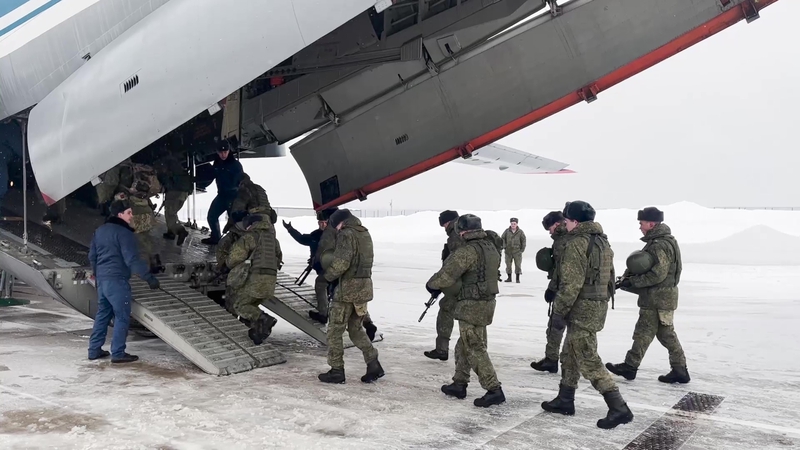
Casualties among Kazakh security officers has risen to 18 dead and 748 wounded as authorities seek to quell unrest in the ex-Soviet country, according to Russian news agencies, citing Kazakhstan's interior ministry.
Residents of the country's largest city, Almaty, were in shock today after their sleepy nation suddenly erupted into violence.
The unrest, which began as protests against a New Year's Day fuel price hike, had swelled dramatically yesterday, when the protesters stormed and torched public buildings, leaving dozens dead, burnt-out cars littering the streets, and bullet casings on the ground.
Overnight, social media was inundated with videos of machine-gun fire and people screaming in fear as authorities launched what they called "anti-terrorist" operations.
By this afternoon, the official death toll stood at 18 security officers.
Russia sent paratroopers into the country after deadly violence spread across the tightly controlled former Soviet state.
They chanted slogans against Nursultan Nazarbayev, 81, who has held on to the reins despite stepping down three years ago as president.

Several armoured personnel carriers and dozens of troops on foot entered the main square of Almaty
Discontent was bubbling beneath the surface, protesters said, and in recent days chants of "Old Man Out!" - in reference to the 81-year-old - echoed across Almaty.
In at least one case protesters looped ropes around a bronze statue of him, trying to pull it down.
His hand-picked successor, President Kassym-Jomart Tokayev, initially responded to the unrest by dismissing his cabinet, reversing the fuel price rise and distancing himself from his predecessor.
He also announced he was taking over a powerful security post Mr Nazarbayev had retained.
But the actions appeared insufficient to mollify crowds who accuse the authorities of amassing huge wealth in oil and minerals while the nation of 19 million remains mostly poor.
Authorities have moved to snuff out the violence, detaining around 2,000 people in Almaty.
They have also instituted a nationwide state of emergency that restricts movements, bans mass gatherings and imposes an overnight curfew.
According to Reuters, the city's airport, seized earlier by protesters, was back under the control of military personnel.
The internet had been shut down across the country and the full extent of the violence was impossible to confirm.
Read: Kazakhstan's week of violent unrest
President Tokayev called in forces from ally Russia overnight as part of a Russian-led military alliance of ex-Soviet states.
He blamed the unrest on foreign-trained terrorists, who he said had seized buildings and weapons.
"It is an undermining of the integrity of the state and most importantly it is an attack on our citizens who are asking me ... to help them urgently," he said.
The secretariat of the Russian-led Collective Security Treaty Organisation said troops being sent included units from Russia, Belarus, Armenia, Tajikistan and Kyrgyzstan.
It did not disclose the overall size of the force.
Unverified video on social media showed troops patrolling Almaty's foggy streets overnight, firing weapons, as well as widespread looting in the city.
Mr Nazarbayev stepped down in 2019 as the last Soviet-era Communist Party boss still ruling a former Soviet state.
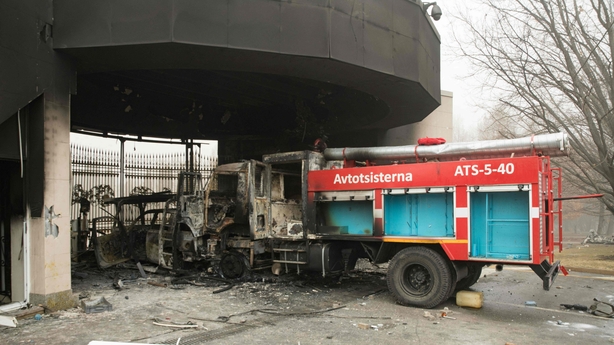
A burned-out fire engine is pictured in front of the gate of an administrative building in central Almaty
But he and his family retained control, keeping key posts overseeing security forces and the political apparatus in Nur-Sultan, the purpose-built capital bearing his name. He has not been seen or heard from since the unrest began.
State television today showed unconfirmed video of a pile of weapons on the street, with people walking up and taking them.
TASS news agency quoted the Kazakh health ministry as saying more than 1,000 people had been injured during the protests, and more than 400 of them were in hospital.
Western countries have called for calm.
Top European Union diplomat Josep Borrell said today that Russia's military intervention in Kazakhstan brought back "memories of situations to be avoided".
Mr Borrell expressed "great concern" about the situation and added: "Rights and security of civilians must be guaranteed ...EU is ready to support in addressing this crisis."
Neighbour China described the events as an internal matter for Kazakhstan and said it hoped the situation would stabilise soon.
The unrest began as protests against the rising price of liquefied petroleum gas, a fuel used by the poor to power their cars.
But it quickly spread into broader anti-government riots, feeding off deep-seated resentment over three decades of rule by Mr Nazarbayev and his successor.
Mr Tokayev ordered government protection for foreign embassies and businesses owned by foreign companies.
The country's reputation for stability had helped attract hundreds of billions of dollars of foreign investment in oil and metals industries.
State TV said the National Bank of Kazakhstan had decided to suspend banks working for the safety of their staff.
The Kazakhstan crisis makes war in Ukraine less likely. If Russia were to insist on "taking back" Ukraine, it would "lose" Kazakhstan, says DW's Andrey Gurkov.
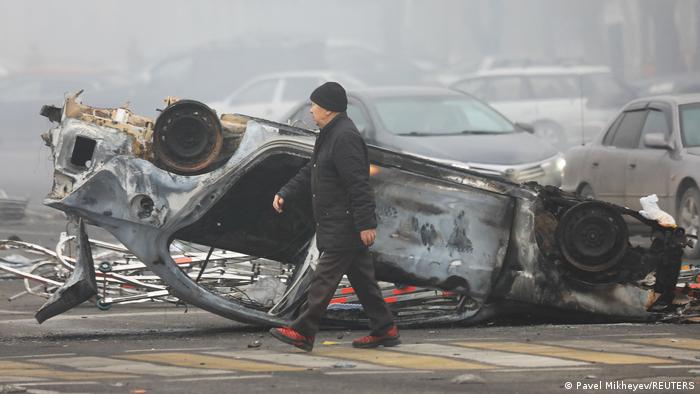
Kazakhstan's nationwide protests came as a surprise
Ongoing mass protests in Kazakhstan have briefly diverted attention away from the biggest geopolitical question that has vexed Europe in recent weeks —whether Russia will wage war against Ukraine.
Although the issue will soon return to the agenda, it has lost urgency in light of the unrest unfolding in Kazakhstan, Russia's large Central Asian neighbor.

DW correspondent Andrey Gurkov
A Russian military operation on Ukrainian territory has now become less likely. There are two reasons for this. One is that a Russian military intervention could lead to domestic instability inside Russia similar to the unrest unfolding in Kazakhstan.
The other stems from the fact that Russia must now dedicate much more attention to its southern neighbor, Kazakhstan.
A seemingly stable Kazakhstan
Kazakhstan's nationwide protests came as a surprise; the fierce clashes and countless fatalities will have rattled Moscow. Until now, Kazakhstan was considered a largely stable country with a dependable government.
'2,000 people arrested in Almaty'
Belarus, too, was regarded as a stable country — until the 2020 revolution and subsequent repression. That two post-Soviet states with similarly authoritarian government structures could experience such instability suggests that Russia should at all costs avoid anything that could spark such developments at home.
Minsk, Almaty, then Moscow?
A large Russian military operation against Ukraine, without a clear objective and scores of dead soldiers, could certainly spark mass unrest within Russia. Especially if the US and EU impose far-reaching sanctions — as has been threatened — leading to a sharp rise in the already horrendously high consumer prices and possible supply shortages.
This scenario looks even more menacing against the backdrop of spiking omicron cases and Russia's seriously overwhelmed health care system.
Domestic fallout
The fact that thousands of frustrated Kazakhs are now venting their anger should be a warning to the Kremlin. It should compel Russia to consider the domestic implications of a threatened or alleged military operation with which it is currently trying to intimidate the US and NATO.
So far, Russia only seems to have weighed up what impact such a move would have on its foreign policy and trade. Given the crisis in Kazakhstan, however, Russia may now also have growing doubts over whether its population would back it.
It will most likely make Russia even less inclined to wage an actual military campaign, rather than a mere propaganda campaign, against Ukraine.
The Kremlin must devote more energy to assisting Kazakhstan. It is, after all, one of Russia's few real allies, and an integration partner in the post-Soviet sphere and on the international stage.
IN PICTURES: KAZAKHSTAN PROTESTS ESCALATEMass protests hit streetsProtests were first triggered by a dramatic rise in the price of fuel. Within a matter of days, the unrest spread throughout the oil-and-gas-rich former Soviet republic of 18 million, morphing into a broad, anti-government protest wave.
Russia to focus on Kazakhstan
Kazakhstan finds itself undergoing major changes. Moscow must now dedicate considerable attention, effort and time to influencing this difficult and complex political process — especially now that Russia has dispatched troops to Kazakhstan at the request of President Kassym-Jomart Tokayev for an indefinite period.
The move could have unpredictable consequences. Several days ago, nobody would have expected this development.
Kremlin will avoid fighting on two fronts
If Russia gives in to the illusory idea of "taking back" Ukraine, it will risk "losing" Kazakhstan. Doing so would also burden the Russian military and populace with a "two-front campaign."
One would expect the Russian leadership to be sufficiently pragmatic and show enough political survival instinct to throw out such an idea.
Even so, Moscow may continue conjuring up the specter of a major war against Ukraine in the hopes of securing big concessions in upcoming negations with the West.
This commentary was originally written in German
AFP
The regime that has ruled Kazakhstan since the fall of the Soviet Union is nearing its end in a popular revolution where people have for the first time unified to express their anger, a France-based opposition leader said on Thursday.
Mukhtar Ablyazov, a former energy minister and bank chairman wanted in his home country on a range of charges, in an interview with AFP also described a Russian-led military intervention as an "occupation" and urged Kazakhs to stand up to the foreign forces.

Kazakhstan, often seen as the most stable state in Central Asia under its first post-Soviet President Nursultan Nazarbayev and his successor Kassym-Jomart Tokayev, has been riven by its most serious protests that have left dozens dead and hundreds detained.
"I think the regime is at its end. It is only a question now of how long," Ablyazov, who leads the Democratic Choice of Kazakhstan (QDT) party and has vociferously encouraged the protests through his social media channels, told AFP in Paris.
"Literally in three days a revolution took place, and it is really a revolution in the public consciousness... and people understood that they are not weak," he added.
After years of discontent over economic problems, "the pent-up frustration blew up. The moment came and everything exploded."
He said while the situation meant "no-one can say" how much longer the current regime will survive "I think that it has maximum one more year, maybe a little more. But maybe in two weeks everything changes, no-one knows."
- 'Oust the regime' -
Referring to images of statues of Nazarbayev being pulled down as well as Tokayev's move to sack his cabinet, Ablyazov said "people now believe that if they unite they can pull down statues and force the government to resign."
Nazarbayev handed over the presidency Tokayev in 2019 but is still widely believed to have immense influence through his title of leader of the nation.
Amid uncertainty over the former strongman's whereabouts, Ablyazov said he had received information Nazarbayev and his close family had fled to the UAE capital of Abu Dhabi after his residence in Kazakhstan's main city of Almaty was stormed.
But it was not possible to independently verify the claim.
Ablyazov, who also told AFP he wanted to meet with President Emmanuel Macron, is a hugely controversial figure whom Kazakhstan has tried and sentenced in absentia for murder and embezzlement.
He is also wanted in Russia and spent time in French custody before France's highest administrative authority in 2016 blocked his extradition to Russia ruling that the request was politically motivated. He now lives in Paris after winning refugee status in France.
Ablyazov, who headed one of Kazakhstan's largest banks from 2005 to 2009, declared he wanted to be prime minister of the country in a new parliamentary system where there would no longer be a president.
"The temporary government that ousts the regime of Nursultan Nazarbayev will be led by me for half a year ahead of free elections," he said.
He also urged Western countries to consider sanctions against the Kazakh leadership, noting that its elite were known to have "lots of assets" in European capitals like Paris and London.
- 'Enemy state' -
The first units of Russian forces from a Moscow-led contingent have now arrived in Kazakhstan after Tokayev appealed to the Russia-dominated Collective Security Treaty Organisation (CSTO) for help.
Ablyazov said that Russian President Vladimir Putin had been happy to assist as part of his strategy to "recreate the old USSR" but said that Kazakhs should see the presence of the foreign forces as an "occupation".
"I am urging people to organise strikes and block roads" to protest their presence in the country," he said.
He warned Russia that Kazakhstan risked becoming like Ukraine -- where anti-Russian sentiment sky-rocketed after Moscow annexed Crimea and pro-Moscow separatists seized two regions in 2014.
"The more Putin intervenes, the more Kazakhstan will become like Ukraine -- an enemy state for Russia."
vl-sjw/har
